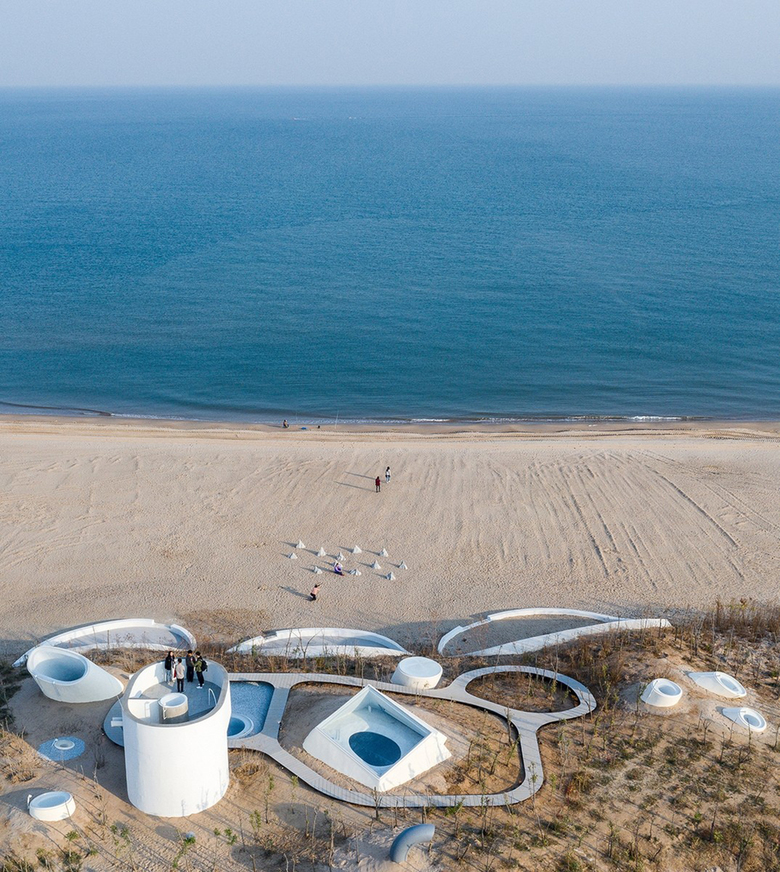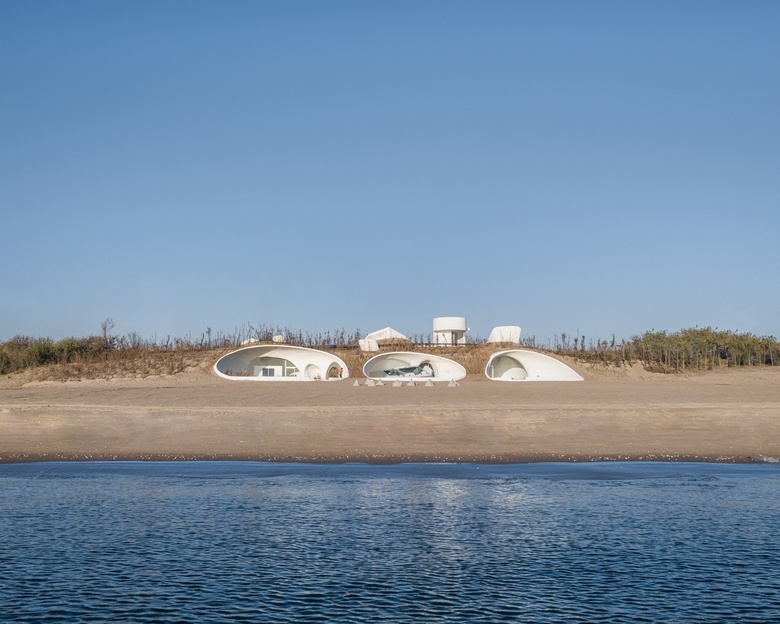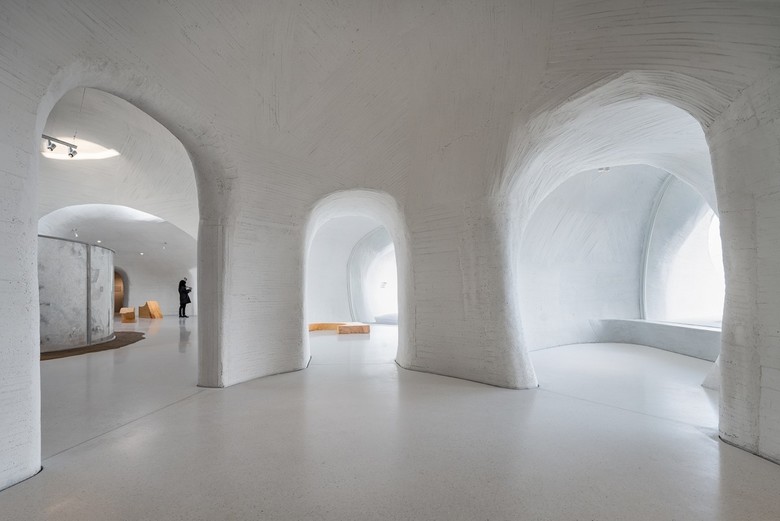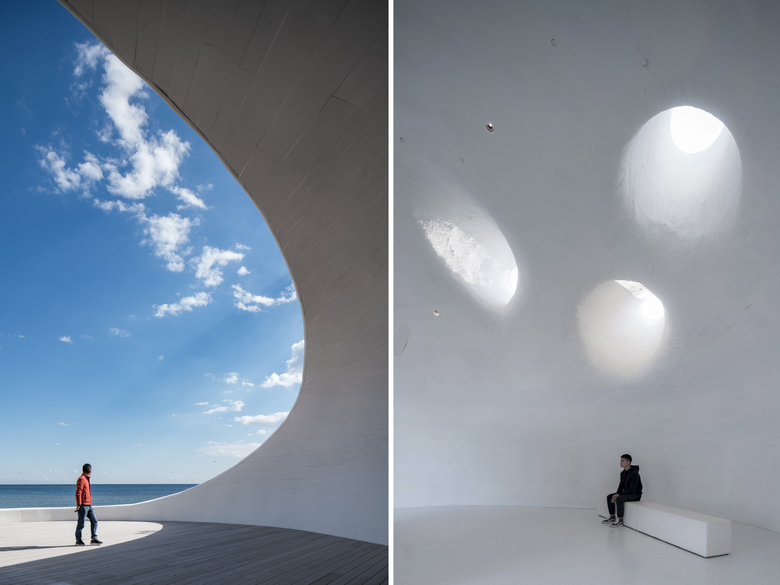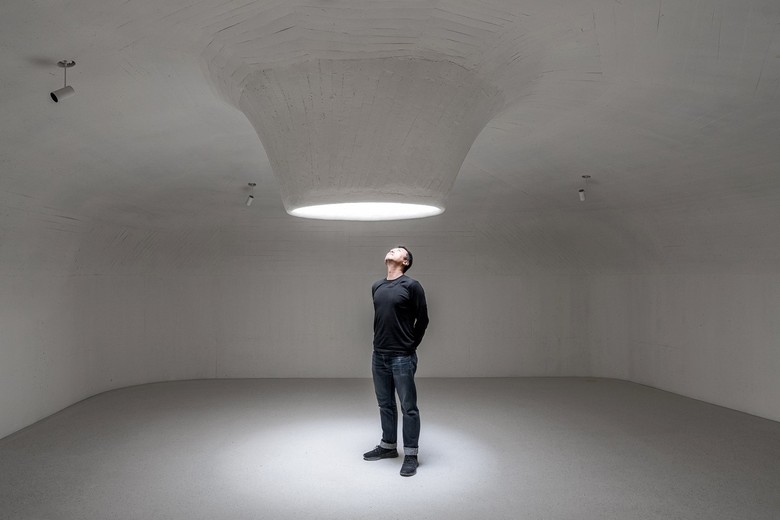UCCA Dune Art Museum
Qinhuangdao, China
- arkkitehdit
- OPEN Architecture
- Location
- Qinhuangdao, China
- Year
- 2018
- Client
- Aranya - UCCA
- Principals in Charge
- LI Hu, HUANG Wenjing
- Project Team
- ZHOU Tingting, WANG Mengmeng, HU Boji, FANG Kuanyin, Joshua PARKER, LU Di, LIN Bihong, YE Qing, Steven SHI, JIA Han
- Local Design Institute
- CABR Technology Co., Ltd
- Lighting Design
- Tsinghua University X Studio + OPEN Architecture
After more than three years of extraordinary effort, OPEN’s UCCA Dune Art Museum has at last been completed, opening to the public with its inaugural exhibition, After Nature, during a celebration held on October 13th. Commissioned by Aranya and operated by the Ullens Center for Contemporary Art, China’s leading independent contemporary art institution, the museum is a significant new destination in the Chinese art world.
Designed by OPEN’s founding partners LI Hu and HUANG Wenjing, the Dune Art Museum is simple, pure, and touching—a return to primal and timeless forms of space. Carved into a dune several meters high along a quiet beach in Qinhuangdao, the 930 square meter museum, whose rich program includes ten galleries and a café, gently disappears beneath the sand. Largely enveloped by the dune, its interconnected, organically shaped spaces echo those of caves—the earliest form of human inhabitance, whose walls were once home to some of man’s first works of art.
The decision to create the museum underneath the dune was born out of the architects’ deep reverence for nature and their desire to protect the vulnerable dune ecosystem, formed by natural forces over thousands of years. Because of the museum, the surrounding sand dunes will be preserved instead of leveled to make space for ocean-view real estate developments, as has happened to many other dunes along the shore.
Respect for nature is displayed not only in the building’s unique relationship to its environment, but also in its efforts towards sustainability. Openings throughout the building, each with a different orientation and size, frame the changing expressions of the sea and sky throughout the day, and also provide natural lighting for the museum’s spaces at all times of the year. A sand-covered roof greatly reduces the building’s summer heat load, and a low-energy, zero-emission ground source heat pump system replaces traditional air conditioning.
Other details speak to the building’s unique construction methods. The complex three-dimensional geometry of the building’s concrete shell was shaped by hand by local workers in Qinhuangdao (some of whom were former shipbuilders), using formwork made from small linear strips of wood and other materials. The architect deliberately retained the irregular and imperfect texture left by the formwork, allowing traces of the building’s manual construction to be felt and seen.
In the near future, a long walkway will be built opposite the Dune Art Museum, extending into the ocean. At low tide, when the pathway is accessible, visitors will be able to walk to the Sea Art Museum, which will rise out of the sea like a solitary rock. Together, these two museums will form a “Dialogue by the Sea”.
Related Projects
Magazine
-
Being Arthur Erickson
1 day ago
-
NEOM Updates
3 days ago
-
Mind the Gap
3 days ago
-
Watchtower Einderheide
5 days ago
